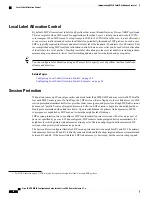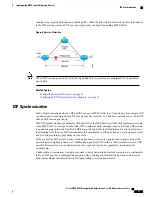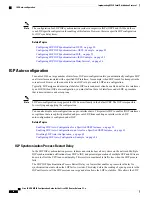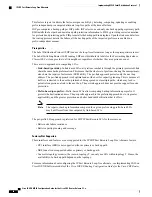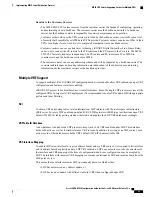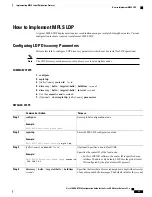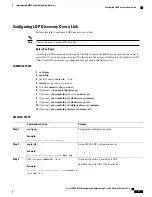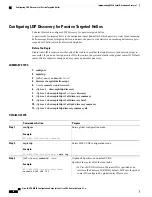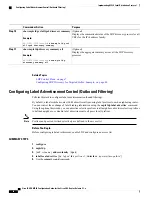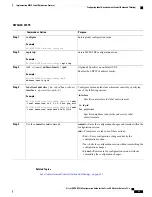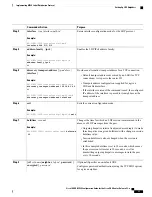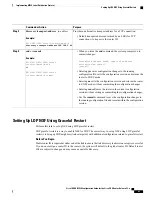
SUMMARY STEPS
1.
configure
2.
mpls ldp
3.
[
vrf vrf-name
]
router-id
lsr-id
4.
interface type interface-path-id
5.
Use the
commit
or
end
command.
6.
(Optional)
show mpls ldp discovery
7.
(Optional)
show mpls ldp vrf vrf-name discovery
8.
(Optional)
show mpls ldp vrf all discovery summary
9.
(Optional)
show mpls ldp vrf all discovery brief
10.
(Optional)
show mpls ldp vrf all ipv4 discovery summary
11.
(Optional)
show mpls ldp discovery summary all
DETAILED STEPS
Purpose
Command or Action
Enters global configuration mode.
configure
Example:
RP/0/RP0/CPU0:router# configure
Step 1
Enters MPLS LDP configuration mode.
mpls ldp
Example:
RP/0/RP0/CPU0:router(config)#
mpls ldp
Step 2
(Optional) Specifies a non-default VRF.
[
vrf vrf-name
]
router-id
lsr-id
Step 3
Example:
RP/0/RP0/CPU0:router(config-ldp)#
router-id
192.168.70.1
Specifies the router ID of the local node.
In Cisco IOS XR software, the router ID is specified as an interface
name or IP address or LSR ID. By default, LDP uses the global
router ID (configured by global router ID process).
Enters interface configuration mode for the LDP protocol.
interface type interface-path-id
Example:
RP/0/RP0/CPU0:router(config-ldp)#
interface
tunnel-te 12001
Step 4
commit
—
Saves the configuration changes and remains within the
configuration session.
Use the
commit
or
end
command.
Step 5
end
—
Prompts user to take one of these actions:
•
Yes
—
Saves configuration changes and exits the
configuration session.
Cisco IOS XR MPLS Configuration Guide for the Cisco CRS Router, Release 5.1.x
30
Implementing MPLS Label Distribution Protocol
Configuring LDP Discovery for Active Targeted Hellos

